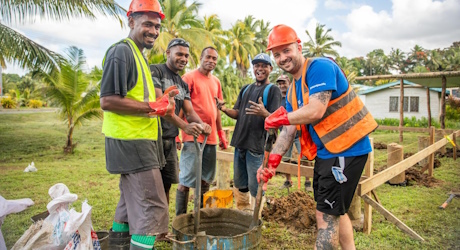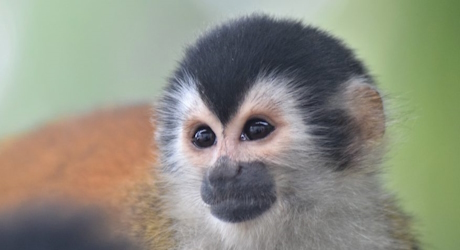Footprints Project
Since 2005, travelers like you have helped us change the world through micro-donations.
-
A total of
8774
Travelers
-
donated
$20012.38
(100% funded) -
to help improve
Environment
-
impacting
50
people -
in
United States
Project Background
Sea Turtle Conservancy (STC) has been monitoring and protecting critical nesting beaches for endangered green turtles and Kemp’s ridley turtles for decades. The primary nesting site for green turtles in the Western Hemisphere is at Tortuguero, Costa Rica. The main nesting site for Kemp’s ridleys is located in Rancho Nuevo, Mexico. These coordinated efforts have stopped the decline of these species and both populations are showing signs of recovery.
However, it’s just as important to monitor and protect sea turtles in the ocean at their foraging sites. Green and Kemp’s ridley sea turtles are highly migratory and spend decades foraging for food in shallow water. The northern Gulf of Mexico provides crucial developmental habitat for young sea turtles that were originally hatched from all over the Wider Caribbean.
Unfortunately, there are no systematic monitoring and conservation programs in place to track these in-water populations and address growing threats, such as debris entanglement, habitat degradation, commercial fishing, boat strikes, diseases related to water quality, and climate change. These threats must be understood and reduced in order to ensure that decades of conservation work is not lost.
Key Project Activities
STC began an in-water research and conservation program in 2018 (with start-up support from World Nomads) in the northern Gulf of Mexico that focuses on population monitoring, collecting biological information, tracking fine-scale movements, rescuing sick or injured turtles, and communicating with stakeholders to reduce negative sea turtle interactions.
During the initial phase of this project, STC surveyed over 1,200 km of coastal habitat and identified major “hot spots” for sea turtles in the northern Gulf. This report shares results on the second phase of this project (also supported by World Nomads), which was initiated in 2019 and included: 1) a capture-mark-recapture program to collect important biometric data about the sea turtles found in this region; 2) a satellite-tracking program to study the fine-scale movements and habitat use of representative individuals from the population; 3) a rescue effort to recover sick and injured turtles for transport to nearby turtle rehabilitation facilities, and 4) a public outreach campaign targeting commercial and recreational fishing communities in the region, with the goal of reducing interactions between turtles, boats and fishing gear.
Key Project Outcomes
Despite some difficulties due to the COVID-19 pandemic, STC spent 44 days on the water since 2019 capturing sea turtles from our research vessel. Key outcomes and discoveries included:
- Tagged, measured, tissue sampled, and photographed 173 sea turtles in three study sites in the northern Gulf of Mexico.
- Juvenile green turtles make up the majority of the sea turtles, which four decades ago had been nearly wiped out due to over-harvesting.
- Captured juvenile green turtles ranged in size from 27.8 cm to 78.7 cm straight carapace length (SCL) with a mean of 47.9 cm SCL.
- Of the captured green turtles, 56% had tumors associated with the disease fibropapillomatosis (FP), with 11% showing severe signs of FP.
- A small proportion of green turtles had evidence of boat strikes or line entanglement (2%).
- Three sea turtles were recaptured during this period (two green turtles and one Kemp’s ridley) and all showed positive growth rate trajectories.
- We attached 23 satellite transmitters to green turtles during 2019 and 2020. Eighteen turtles transmitted location, depth and water temperature data from the fall into the spring months (78%), allowing us to identify previously unknown overwintering sites and relatively high site fidelity at non-winter sites.
- One underweight green turtle with severe FP was rescued and sent to a Florida rehab facility.
- Work in the last three years will result in at least 4 scientific publications, establishing this relatively undeveloped coastline as one of the most important sea turtle foraging grounds in the northern Gulf of Mexico.
Community Involvement
In conjunction with research trips, STC interacted with visitors and residents in the small fishing towns of Florida’s northern Gulf coast. Many of them shared stories of seeing sea turtles while fishing and told us where they thought we might find them. Some of the older residents remember a time when they and their relatives hunted green turtles for meat and wondered if they would be able to do this in the future. Each year, STC interacted with 50 to 75 individuals along the coast. Most were excited to see STC involved in sea turtle research and conservation in the region.
Additionally, STC involved local biology students from the University of Florida in the research and conservation project. By including local students in the program, STC expanded our educational reach and gave aspiring biologists outstanding field research experience that will help guide their academic and professional careers—hopefully inspiring some to focus additional work on the conservation of sea turtles.
What's Next?
STC’s in-water research, monitoring, and conservation program in the northern Gulf has a strong foundation for the future. STC is partnering with local universities and state agencies on multiple research and conservation initiatives. This includes new research on vessel strikes, diseases, health assessments, and water quality issues. In addition, STC is developing a small information card to distribute to visitors and residents along the coast, primarily to educate them on the importance of the northern Gulf to sea turtles and what they can do to help.
Large portions of Florida’s northern Gulf are still relatively undeveloped and scenic. However, STC expects this to change in the coming decades as new freeways are being planned and coastal development pressure increases in the region. This will likely impact the habitats that the sea turtles depend upon and, in turn, affect the sea turtles themselves. STC’s research and conservation along this coast will allow us to work toward a healthy future for these important sea turtle populations even in the face of increasing pressure from humans.
Traveling soon? When you buy travel insurance with us, you can make a contribution towards a cause you care about.
Get a quote






